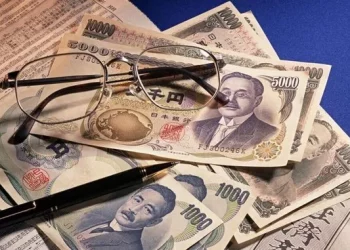Australia is a prominent economic powerhouse in the Asia-Pacific region and plays an integral role in global financial markets. One of the essential aspects of Australia’s economy, particularly in the world of foreign exchange (forex), is its currency. For traders, investors, and anyone involved in international finance, understanding the currency of a nation is fundamental. So, what currency does Australia use now?
The Australian Dollar: A Brief Overview
Australia’s official currency is the Australian Dollar, which is symbolized as AUD and is sometimes referred to as the “Aussie dollar” colloquially. The Australian Dollar is abbreviated as AUD, and it is one of the most traded currencies in the global forex market. Its international significance has grown significantly over the years, and it plays a vital role in the world economy.
The Australian Dollar is also the official currency of several other Pacific Island nations and territories, such as Kiribati, Nauru, Tuvalu, and Norfolk Island. However, when people talk about the currency of Australia, they are generally referring to the AUD used in the mainland and Tasmania.
The Evolution of the Australian Dollar
Australia’s history with currency goes back much further than the inception of the Australian Dollar. Before the AUD was introduced, Australia used the Australian pound, which was pegged to the British pound. This British-linked system worked well for many years, but by the mid-20th century, it was clear that Australia’s growing economy and global connections needed more flexibility.
In 1966, the Australian Dollar officially replaced the Australian pound at a rate of 2 Australian dollars to 1 pound. This shift was part of a broader move to decimalization, and it reflected Australia’s transition to a more independent and robust economic identity in a globalized world.
Since its introduction, the Australian Dollar has undergone many changes, particularly in its exchange rate mechanisms. For most of its history, the Australian Dollar has been a floating currency, meaning its value is determined by market forces in foreign exchange markets. This system has allowed the AUD to reflect the broader economic conditions of Australia, including commodity prices, interest rates, and fiscal policies. However, the value of the Australian Dollar is also influenced by global trends, especially those concerning international trade and geopolitical events.
Why the Australian Dollar Is Important
The Australian Dollar holds a special place in the global forex market for several reasons. Firstly, Australia’s status as a major exporter of commodities has made the AUD particularly sensitive to fluctuations in commodity prices. The country is a top exporter of key natural resources, including iron ore, coal, and natural gas. As a result, when demand for these commodities rises, the Australian Dollar tends to strengthen. Conversely, if commodity prices fall, the AUD often weakens.
Another factor contributing to the Australian Dollar’s prominence is Australia’s relatively high interest rates. The country has consistently offered interest rates higher than those of many other developed nations. This has led to the AUD being a popular choice among traders who engage in carry trading – a strategy in which investors borrow money in a currency with low interest rates and invest in a currency with higher rates. Due to these interest rate differentials, the Australian Dollar is frequently traded in the forex markets.
Finally, Australia’s strong financial institutions, transparent regulatory frameworks, and overall economic stability contribute to the attractiveness of the Australian Dollar as a stable and liquid currency for global investors.
How the Australian Dollar Is Traded
In forex markets, currencies are always traded in pairs, and the Australian Dollar is commonly paired with other major currencies, such as the US Dollar (AUD/USD), the Euro (AUD/EUR), and the Japanese Yen (AUD/JPY). Among these, the AUD/USD is by far the most traded currency pair involving the Australian Dollar, accounting for a large portion of global forex trading volume.
The AUD/USD pair is particularly notable because of the close trade relationships between Australia and the United States. Australia is a significant trading partner of the U.S., and any changes in their economic conditions tend to have an immediate effect on the exchange rate. The AUD/USD pair is also sensitive to broader global trends, including commodity prices and interest rate policies in both Australia and the U.S.
In terms of trading strategies, the Australian Dollar can be analyzed using traditional technical analysis, fundamental analysis, or a combination of both. Forex traders may use tools such as moving averages, support and resistance levels, and economic data releases to predict movements in the AUD and other currencies.
Currency Pegs and the Floating Australian Dollar
As mentioned earlier, the Australian Dollar operates in a floating exchange rate system. This means that the AUD’s value is determined by market demand and supply, and it is not directly tied to a fixed value against another currency or a basket of currencies. This is in contrast to a pegged or fixed exchange rate, where the currency is tied to another major currency (like the U.S. Dollar or the Euro) at a set exchange rate.
Historically, Australia did experiment with a pegged exchange rate. Prior to the 1970s, the Australian dollar was pegged to the British pound, and the country’s foreign exchange policy was more rigid. However, in 1983, Australia shifted to a floating exchange rate system, which has allowed the Australian Dollar to respond more flexibly to global economic conditions. The move to a floating currency also helped Australia better weather global financial crises, including the Asian financial crisis in the late 1990s and the global financial crisis of 2007-2008.
The floating exchange rate system has allowed the Australian government to focus more on domestic economic policy without needing to maintain a currency peg. While a floating currency can lead to short-term volatility in exchange rates, it also allows Australia’s central bank, the Reserve Bank of Australia (RBA), to use monetary policy more effectively to manage inflation and employment.
The Reserve Bank of Australia and Monetary Policy
The Reserve Bank of Australia (RBA) is Australia’s central bank and plays a crucial role in determining the value and stability of the Australian Dollar. One of the RBA’s primary tools for influencing the economy is setting the official cash rate, which is the interest rate at which banks borrow and lend to each other overnight. The cash rate directly affects the interest rates that consumers and businesses pay for loans and mortgages, and it can have a significant impact on the Australian Dollar.
When the RBA raises interest rates, the value of the Australian Dollar typically strengthens because higher interest rates attract foreign investment, making the currency more attractive to traders and investors. Conversely, when the RBA cuts interest rates, the Australian Dollar can weaken, as lower interest rates reduce the return on investments denominated in AUD.
In addition to adjusting interest rates, the RBA also uses other tools, such as open market operations and quantitative easing, to influence the money supply and financial markets. These policies are designed to maintain low inflation, full employment, and overall economic stability in Australia. The RBA’s decisions are closely watched by forex traders, as they can have a direct impact on the Australian Dollar’s exchange rate.
The Australian Dollar in Global Trade and Investment
The Australian Dollar’s value is also influenced by Australia’s position in global trade. As one of the world’s leading exporters of natural resources, the country’s trade relationships significantly impact the demand for the Australian Dollar. For instance, Australia’s large trade surplus (in which exports exceed imports) tends to support the Australian Dollar, as foreign buyers need to purchase AUD to pay for Australian goods and services.
Australia’s trade relations with China have been especially important in recent years. China is Australia’s largest trading partner, particularly in terms of the import of Australian commodities such as coal and iron ore. Fluctuations in the demand for these commodities, often driven by Chinese industrial activity, can lead to shifts in the value of the Australian Dollar.
Similarly, Australia’s proximity to other emerging Asian economies, such as Japan and India, has also led to increased demand for the AUD. As the Australian economy continues to diversify and grow, the global significance of the Australian Dollar remains robust, making it an important currency for investors and traders alike.
Conclusion
In conclusion, Australia uses the Australian Dollar (AUD) as its official currency. The Australian Dollar has been a floating currency since 1983, and it is one of the most widely traded currencies in the global forex market. Its value is influenced by a variety of factors, including interest rates set by the Reserve Bank of Australia, commodity prices, global economic conditions, and international trade relationships. As a commodity-driven currency, the Australian Dollar plays a significant role in the broader financial system, and its movements are closely monitored by traders, investors, and policymakers worldwide.
Whether you’re a forex trader looking to capitalize on fluctuations in the AUD or simply someone interested in understanding the currency of a major global economy, the Australian Dollar remains an essential part of the international financial landscape. Its importance is not just confined to Australia but extends across the world, influencing trade, investment, and economic policy in many countries.
Related Topics:



























